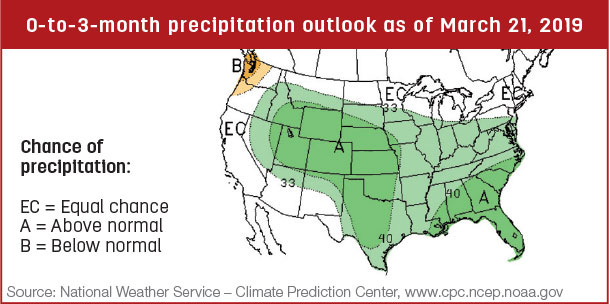Cow body condition and availability of high-quality forage are more important for determining when to wean and sale calves than a weight goal.
 In order for it to be profitable to supplement or feed calves, the value of additional weight gain (aka value of gain) has to be lower than the cost of adding that gain. While this sounds straightforward, the actual value of gain is often not accounted for correctly. What would be the value of gain when increasing the weight of a steer by 50 pounds when steers are sold at the prices below?
In order for it to be profitable to supplement or feed calves, the value of additional weight gain (aka value of gain) has to be lower than the cost of adding that gain. While this sounds straightforward, the actual value of gain is often not accounted for correctly. What would be the value of gain when increasing the weight of a steer by 50 pounds when steers are sold at the prices below?
• 500-pound steer at $1.88 per pound (aka $188 per hundredweight [cwt])
• 550-pound steer at $1.79 per pound (aka $179 per cwt)
Often it is assumed the value of each additional pound of gain is $1.79 because the 550-pound steer is bringing $1.79 per pound. However, the actual value of additional gain is only 89 cents per pound in this example. To calculate the value of gain, the change in the value per head is divided by the change in weight. For the previous example:
• 500 pounds x $1.88 per pound = $940
• 550 x $1.79 per pound = $984.50
• $984.50 - $940 = $44.50 (change in animal value)
• 550 pounds - 500 pounds = 50 pound (change in animal weight)
• $44.50 ÷ 50 pound = 89 cents per pound
If a feed costs $320 per ton (16 cents per pound) and it takes 7 pounds of feed to get an additional pound of gain, then it costs $1.12 for each pound of gain. Feeding in this example is a money-losing proposition. This is why it is critical to always accurately account for the actual value of gain when making feeding or other management decisions.
Historically, the value of gain of calves has been around 80 cents per pound. However, value of gain changes as cost of feed, and thus cost of gain in the feedlot, changes. As the price of corn goes up, the value of gain of calves goes up; feedlots would rather buy heavier cattle and put less weight on them in the feedlot. As corn prices decrease, the value of gain decreases. ![]()

-
Jason Banta
- Associate Professor and Extension Beef Cattle Specialist
- Texas A&M University
- Email Jason Banta






